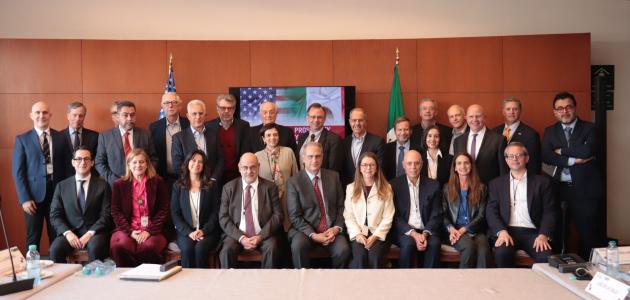The second wave of the Stanford University/Hoover Institution/Knowledge Networks (S/H/KN) internet poll conducted during the final week of October shows two of the four propositions supported by Governor Arnold Schwarzenegger with comfortable leads, one narrowly ahead, and one trailing badly.
The latest poll results show Proposition 74 (teacher tenure) slightly ahead, 53–47, but with a margin that is within the sampling error of the poll. The two most controversial propositions appear to be heading in opposite directions. Proposition 75 (public employee union dues) has a comfortable lead 64–36, but Proposition 76 (state budget process) trails by double digits, 45–55. Finally, Proposition 77 (redistricting) supported by most of the state's newspapers and an array of good government groups, leads 55–45. These results appear to be relatively insensitive to variations in voter turnout, but in all four cases, the lower the turnout the higher the support for the proposition.
Compared to the early October poll, this more recent wave of the S/H/KN poll shows higher levels of support for three of the four propositions supported by the governor. Support for Proposition 75 (public employee union dues) has declined, but the proposition still has a solid lead.
Four other propositions appear on the November 8 ballot. Proposition 73 (parental consent) has a significant lead 58–42. Two propositions address prescription drugs and both show virtually equal levels of support and opposition. Proposition 78, supported by the pharmaceutical companies, stands at 51–49, while Proposition 79, supported by consumer groups, stands at 50-50. Proposition 80, regulating electric service providers, trails 46–54.
The S/H/KN internet polls differ from conventional telephone polls in having respondents fill out a replica of the actual ballot. This procedure offers more anonymity and a closer resemblance to the choice people actually face in the voting booth. It results in fewer undecideds than are recorded in conventional polls.
The study results and survey questions are available at http://www.knowledgenetworks.com/ganp/.
Appendix to the News Release
for the Stanford University/Hoover Institution/Knowledge Networks Poll of the November 8, 2005 California
Special Election
October 31, 2005
Methodological Note
The second wave of the Stanford University/Hoover Institution/Knowledge Networks poll was conducted between October 24 and October 28 using the Knowledge Networks web-enabled panel, which provides a representative sample of Californian households (see http://www.knowledgenetworks.com/ganp).
Of the 1,616 adults invited to participate in the survey, 803 (50%) completed the survey in time for inclusion in the analysis. Of these cases, 585 (73%) were randomly assigned to the condition of receiving the ballot questions. Of these 585 cases, 378 (65%) reported that they definitely intend to vote. The analyses presented in this report are based on the interviews with these 378 respondents. The sampling margin of error for the total sample of 378 likely voters is 5 percentage points.
The survey results were weighted to U.S. Census population benchmarks for adults residing in the State of California in terms of age, race/ethnicity, education obtainment, and urban/rural.
For Media Queries:
David W. Brady, Senior Fellow and Associate Director of Research, Hoover Institution, Stanford University, at (650) 723-9702 or brady@hoover.stanford.edu. Morris Fiorina, Professor of Political Science and Senior Fellow, Hoover Institution at (650) 723-0254 or mfiorina@stanford.edu.
For more information, contact J. Michael Dennis, Vice President and Managing Director, Government and Academic Research, at: (650) 289-2160 or mdennis@knowledgenetworks.com













